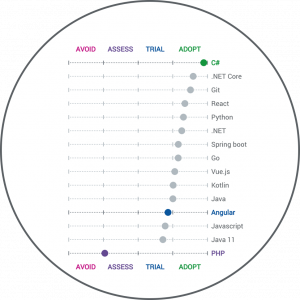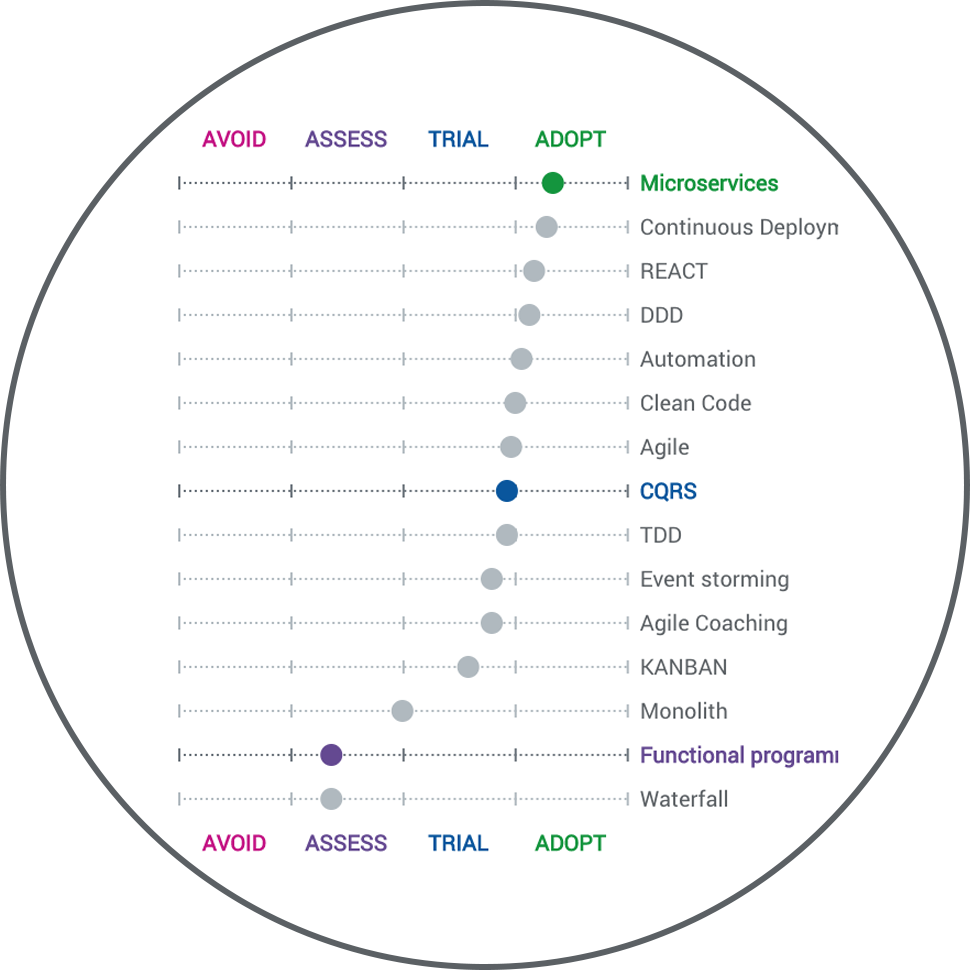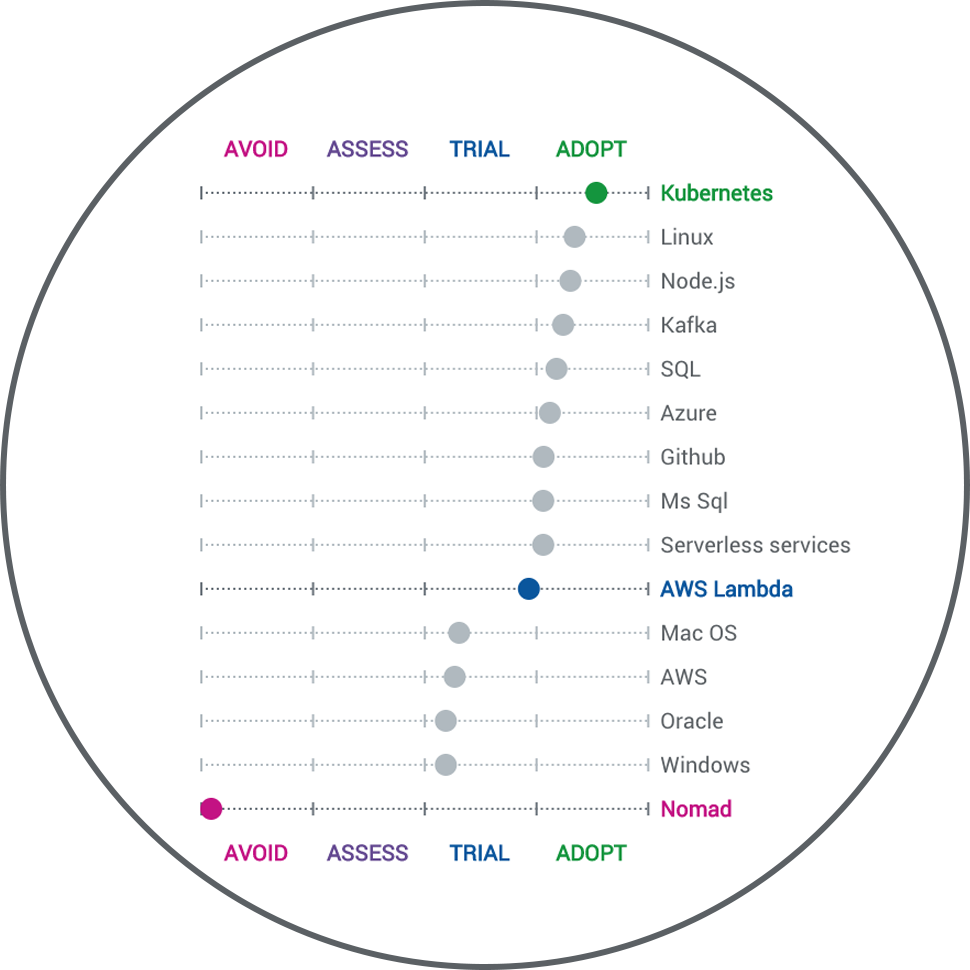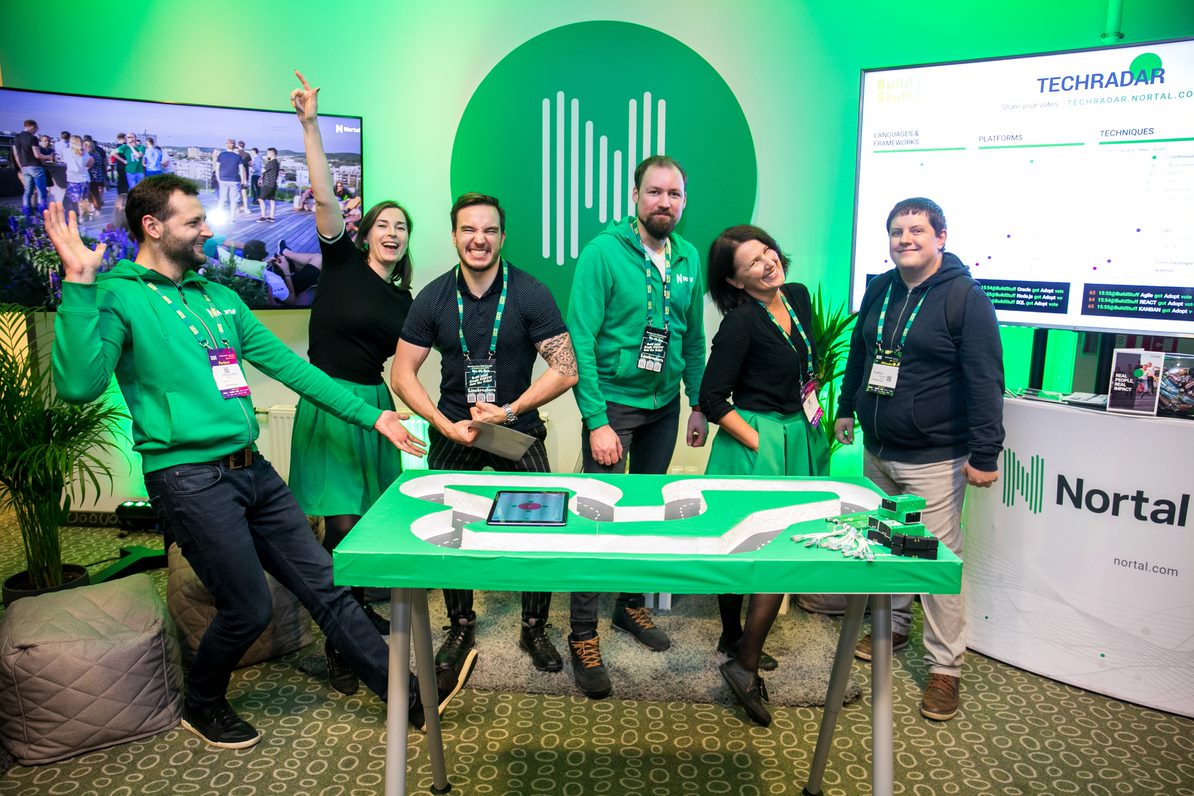Blog
by Klaidas Ivaškevičius, Senior .NET Developer @Nortal
The technology match between Java and .NET trends
Build Stuff annually brings together up to 1,400 developers, academics and software architects around the globe. The audience is divided more or less equally between Java and .NET followers. Hence, the different preferences regarding tech tools and techniques between the two “schools”.
Via Nortal’s Tech Radar, we collected and mapped these preferences and divided them into four layers: languages and frameworks, techniques, technologies and tools.
Languages and Frameworks
In outlining the top picks, .NET and Java, React and Angular, CQRS and Microservices, Docker and Kubernetes are the most popular choices among Build Stuff conference participants. Whereas, PHP is an AVOID winner.
Compared to the Java conference GeekOut results, it is obvious why .NET received moderate ratings there. Whereas, at Build Stuff, the framework is a leading player. This nuance has a slight influence on other technological preferences as well.

Front-end tech, i.e., Angular, React, Vue.js, Node.js and JavaScript, makes the top 10 list at both conferences, being commonly used technology for Java as well as for .NET developers. All of the mentioned also received high rankings in this year’s StackOverflow survey.
Techniques
Since Greg Young created CQRS, and he is a “C# guy,” it is much more popular among .NET people. This is probably the reason we do not see CQRS in the GeekOut results.

Meanwhile, DDD has a solid presence in the results of both conferences, similar to Microservices, Monolith, Agile and Continuous Deployment.
Platforms
Build Stuff participants tend to have a builder’s mindset; therefore, less off-the-shelf commercial platforms were mentioned compared to at Geekout. Top choices at Build Stuff were Linux, Kubernetes, AWS and Kafka. Kubernetes has gained a lot more trust over the past year, and a majority of the votes recommended it as “to adopt.”

Tools
Visual Studio Code is becoming increasingly popular among all tech people. According to a StackOverflow survey, more than 50% of developers have Visual Studio Code installed on their computers, compared to just 34% last year.

If we disregard Java-related tools, like Jenkins, SonarQube, JRebel, we can see quite similar results to Geekout in this section: Intellij, Git* and Docker, which are most popular at both Build Stuff and GeekOut conferences.
Guided by the quality
High-level developer surveys, such as StackOverflow or Jetbrains’ “The State of Developer Ecosystem 2019”, give very good albeit a rather broad overview of industry trends. Also, tools like Thoughtworks’ Technology Radar provide opinionated views from the perspective of great companies.
Conference radars, however, allow us to see the trends within smaller ecosystems. And we have detected the potential to elaborate on common topics within large-scale surveys as well as identify areas for growth and training.
As the idea of Tech Radar spreads and becomes more well-known, the quality of the gathered results keeps improving. This allows us and our followers to continuously learn — keeping us on track to becoming more productive in building high-quality software.


Klaidas Ivaškevičius
Senior .NET Developer
Get in touch
Let us offer you a new perspective.


